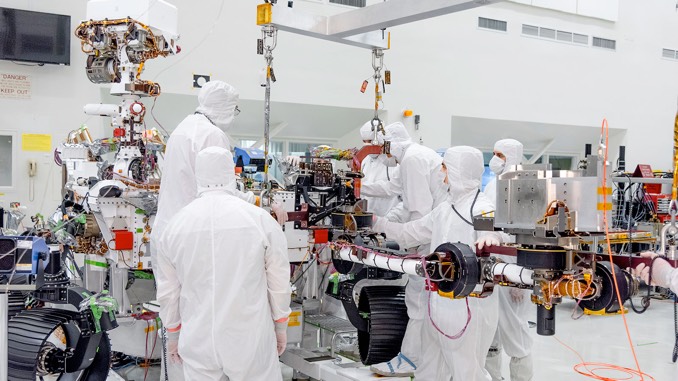
After installing the wheels and suspension that will enable the Mars 2020 rover to move about the surface of the red planet, engineers at NASA’s Jet Propulsion Laboratory in Pasadena, California, have installed the SuperCam instrument and the rover’s 2.1-metre (7-foot)-long robot arm. Launch remains targeted for July 2020.
The multi-purpose SuperCam, developed by the French space agency CNES and the Los Alamos National Laboratory in the United States, is has been dubbed the Swiss army knife of instruments” aboard the rover.
Similar to the ChemCam instrument aboard the Curiosity rover currently at work in Gale Crater, SuperCam features an expanded set of remote-sensing tools that will enable remote detection of compounds that could have played a role in the development of life if it ever evolved on Mars.
Capabilities include Laser Induced Breakdown Spectroscopy, or LIBS, for studying elemental composition, infrared and Raman spectroscopy, colour imaging and audio recording with a microphone.
For direct manipulation of surface samples, Mars 2020 is now equipped with its main robot arm, installed 21 June. The appendage features five motorised joints and eventually will carry a complex rotating turret on its end that will include high-definition cameras, science instruments and a percussive drill and coring mechanism to collect and help analyse soil and rock samples. The rover also will cache collected samples on the surface for possible return to Earth on a future mission.
“You have to give a hand to our rover arm installation team,” Ryan van Schilifgaarde, an assembly engineer, said in a NASA release. “They made an extremely intricate operation look easy. We’re looking forward to more of the same when the arm will receive its turret in the next few weeks.”
The Mars 2020 rover is scheduled to land in Jezero Crater on 18 February 2021.



